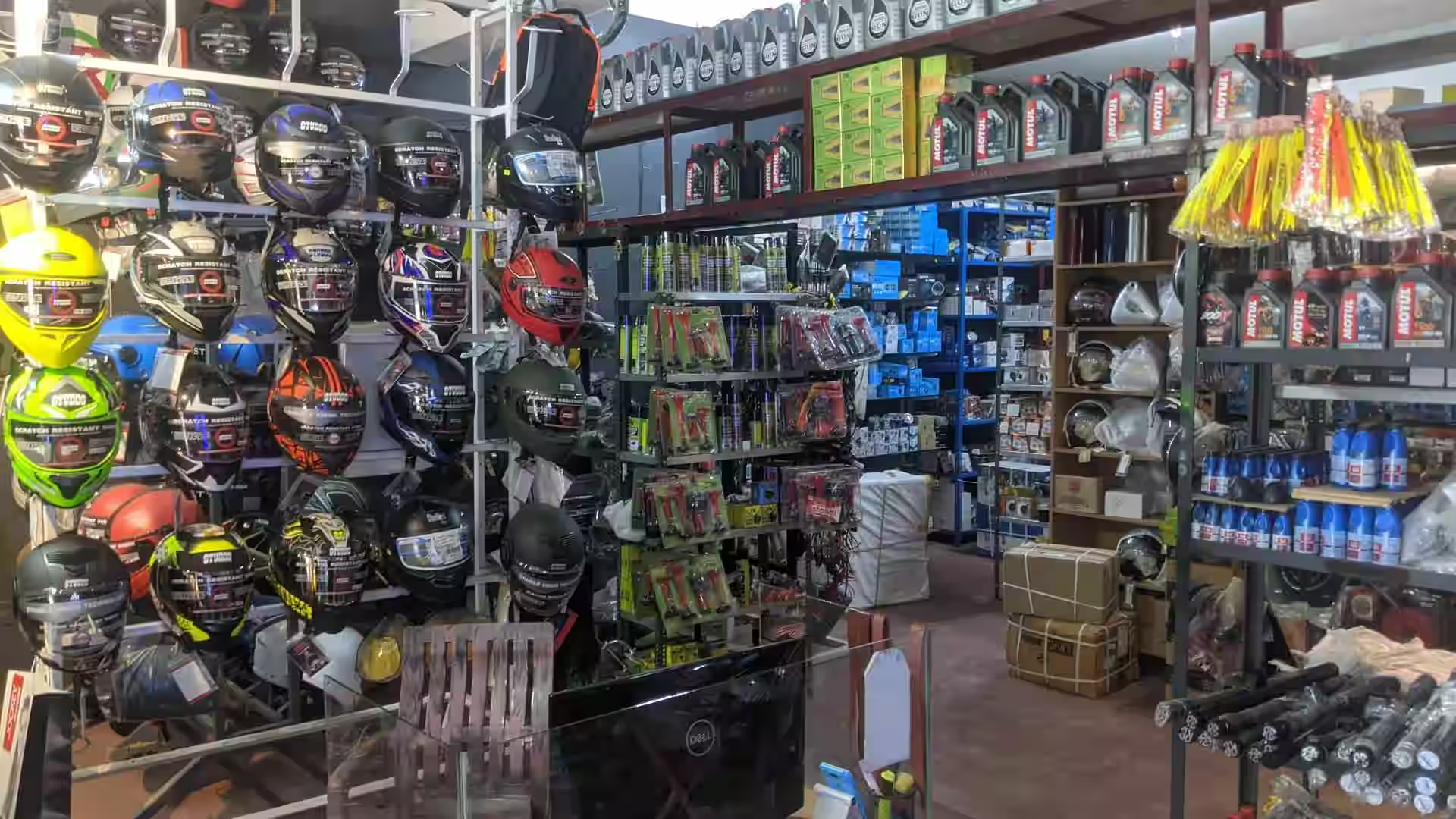Discover the most up to date Motocross Gear NZ for every single Level of Rider
Discover the most up to date Motocross Gear NZ for every single Level of Rider
Blog Article
Comprehending the Vital Parts of a Motorbike: A Comprehensive Overview for Fanatics
For motorcycle fanatics wanting to elevate their riding experience and ensure their bikes run smoothly, recognizing the essential components of a motorcycle is critical. Each element, from the engine's intricate functions to the essential function of the braking devices, not only impacts performance yet also safety and convenience. This guide will walk via the fundamental parts that every rider need to be acquainted with, making it possible for notified options in both maintenance and potential upgrades. As we begin this exploration, one must ask: exactly how does each element interact to develop the seamless trip every enthusiast looks for?
Engine Parts

The camshaft plays an essential duty in controlling the timing of the engine's shutoffs, making certain the specific opening and closing essential for effective gas and air intake, in addition to exhaust expulsion. This timing is important to maintaining optimal engine efficiency and performance. In addition, the carburetor or gas shot system, relying on the bike version, is responsible for blending air with gas in the correct ratio for combustion.
The cooling system, either air or liquid-based, works to maintain the engine's temperature level within functional limitations, protecting against overheating and making sure long life - mx parts nz. Each part, diligently designed and integrated, contributes to the smooth operation of the engine, defining the motorcycle's power output and total efficiency
Transmission System
Integral to the motorcycle's capability, the transmission system makes certain effective power transfer from the engine to the wheels. This system comprises numerous essential elements, consisting of the clutch, gearbox, and last drive, each playing a crucial duty in converting the engine's power into movement. The clutch, typically run by a hand lever, serves to engage and disengage the engine from the transmission, permitting smooth equipment changes and controlled acceleration.
The transmission, typically referred to as the transmission proper, consists of a set of equipments that motorcyclists can by hand move through to adjust the bike's rate and torque outcome. These equipments are set up in a sequence that allows the motorcycle to accelerate efficiently and keep ideal engine efficiency across different speeds. Most bikes utilize a sequential transmission, calling for the motorcyclist to shift gears in a fixed order.
Braking Systems
While recognizing the transmission system is essential to using a motorbike's power, just as important is the capability to control and quit that power efficiently, which is where stopping devices enter play. Brakes are critical for safety and efficiency, supplying the cyclist with the required control to browse various surfaces and problems. Typically, motorbikes include 2 types of stopping systems: disc brakes and drum brakes.
Disc brakes are extra prevalent in modern motorbikes due to their exceptional efficiency. This system supplies better heat dissipation, constant efficiency, and boosted stopping power, especially in wet conditions.
Conversely, drum brakes, though much less typical, are still discovered in some motorcycles. They work by pushing brake footwear versus the internal surface of a drum connected to the wheel. While usually much less effective in heat dissipation and stopping power, drum brakes are easier and much more affordable.
Understanding these braking systems' nuances enables bikers to preserve their motorbikes appropriately and value the engineering that makes sure reliable and secure stopping.
Suspension and Guiding
Suspension and guiding systems are crucial parts that considerably affect a motorbike's handling and ride comfort. The suspension system, including forks at the front and shock absorbers at the rear, absorbs roadway irregularities, enhancing stability and control. Front forks, inverted or generally telescopic, compress and rebound motorbike stand to mitigate impacts, used motorcycle dealers near me while rear shock absorbers preserve tire call with the roadway, vital for grip and safety.
Guiding, focused around the handlebars, attaches the cyclist to the motorcycle's directional control. The steering head bearings make sure smooth procedure, enabling accurate maneuverability. Correct alignment and upkeep of these bearings are important for predictable guiding reaction and lowering biker tiredness.
The suspension's adjustability is an additional vital facet; preload, damping, and rebound setups allow customization to match numerous riding conditions and styles. This versatility is important for enhancing efficiency, whether navigating metropolitan roads or tackling sturdy tracks. Developments like electronic suspension systems provide real-time modifications, enhancing experience top quality across diverse terrains.

Electrical Solutions
After making sure a smooth and controlled ride through effective suspension and guiding systems, attention turns to the electric systems, a pivotal element of modern-day bikes. These systems play an essential duty not only in beginning the engine but likewise in powering different elements that enhance the performance and security of the motorbike.
At the heart of a bike's electrical system is the battery, which stores electric power essential for starting the engine and powering auxiliary systems - motorbike shop. The generator or generator, combined with the rectifier-regulator, makes certain the battery remains billed while the motorbike functions, transforming mechanical power right into electrical power and preserving voltage levels
The ignition system, one more crucial part, is liable for igniting the air-fuel mixture in the engine's cyndrical tubes. Modern bikes usually use a digital ignition system, offering higher performance and dependability contrasted to typical systems.
Lights systems, consisting of headlights, tail lights, and signs, are likewise important, ensuring exposure and safety and security for the biker. Additional digital elements such as sensors, control systems, and displays add to innovative functions like gas injection monitoring, anti-lock braking systems (ABDOMINAL MUSCLE), and digital control panels, better enhancing the riding experience.
Verdict
An extensive understanding of a bike's necessary components, including the engine, transmission system, stopping devices, suspension, steering, and electric systems, is essential for fanatics aiming to maximize efficiency, convenience, and safety. Mastery of these aspects permits notified choices regarding maintenance and upgrades, eventually important link boosting the riding experience. By integrating this understanding, motorcyclists can guarantee their bikes operate at peak effectiveness and dependability, consequently maximizing both satisfaction and durability of their cars.
For bike lovers looking to elevate their riding experience and ensure their bikes run smoothly, understanding the vital elements of a motorbike is vital.Important to the bike's capability, the transmission system makes sure reliable power transfer from the engine to the wheels.While understanding the transmission system is key to taking advantage of a motorcycle's power, equally essential is the ability to control and quit that power efficiently, which is where stopping devices come right into play. Generally, motorbikes include two types of stopping systems: disc brakes and drum brakes.
An extensive comprehension of a motorcycle's vital components, including the engine, transmission system, stopping mechanisms, suspension, guiding, and electric systems, is important for enthusiasts aiming to maximize safety, comfort, and efficiency.
Report this page